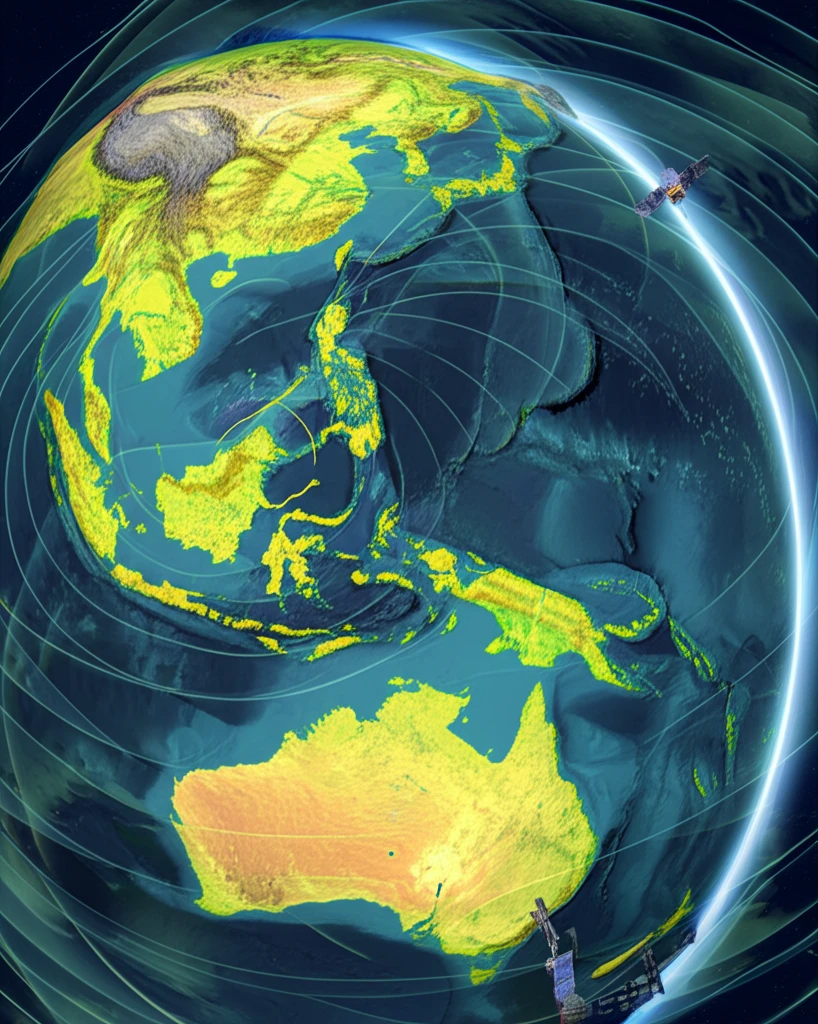
Shifting Ground: Understanding Southeast Asia's Earthquake-Prone Sundaland Plate
"How major seismic events are reshaping our understanding of tectonic plate movement and regional stability in Southeast Asia. Discover the Sundaland Plate's Present-Day Kinematics!"
Southeast Asia, a region renowned for its vibrant cultures and bustling economies, sits atop a complex geological puzzle known as the Sundaland Plate. This continental core, part of a larger tectonic framework, is constantly influenced by the movements and interactions of surrounding plates, particularly the powerful Indian-Australian Plate. The interplay between these massive structures results in frequent seismic events, some of which have reshaped landscapes and communities alike.
Among the most notable seismic events are the series of major earthquakes that have struck the region in recent decades. The 2004 Aceh earthquake, the 2005 Nias earthquake, and the 2012 doublet earthquakes in northern Sumatra have not only caused immense devastation but have also provided invaluable data for understanding the dynamics of the Sundaland Plate. These events triggered widespread postseismic decay, affecting areas far beyond recognized plate boundaries.
This article delves into a recent study analyzing long-term GPS data to reveal how these seismic events have influenced the kinematics—or motion—of the Sundaland Plate. By examining the changes in plate movement before, during, and after these earthquakes, we gain critical insights into the ongoing geological processes that define this tectonically active region.
Unveiling the Sundaland Plate's Secrets Through GPS Technology

To understand the Sundaland Plate, scientists use a network of continuous GPS (cGPS) stations scattered across Southeast Asia. These stations act like precise surveying tools, tracking the Earth's surface movements with millimeter accuracy. By analyzing the data collected over many years, researchers can determine how the plate shifts and deforms in response to major events.
- Significant changes in the direction of movement of Peninsular Malaysia following the 2004 and 2005 earthquakes.
- A period of elastic relaxation rebound after these major events.
- A return to the original course of motion after the 2012 Sumatra earthquakes, albeit at a slightly reduced velocity.
Implications and Future Research
This research challenges previous assumptions about the stability of the Sundaland Plate, particularly the notion that Peninsular Malaysia acts as an undeformed core. The findings reveal that even regions far from the immediate earthquake zones are subject to measurable postseismic deformation. This underscores the interconnectedness of the plate and the far-reaching effects of major seismic events. Further investigation of relative rotation vectors between the Sundaland plate with neighboring plates is essential to understand the relative plate motion.
